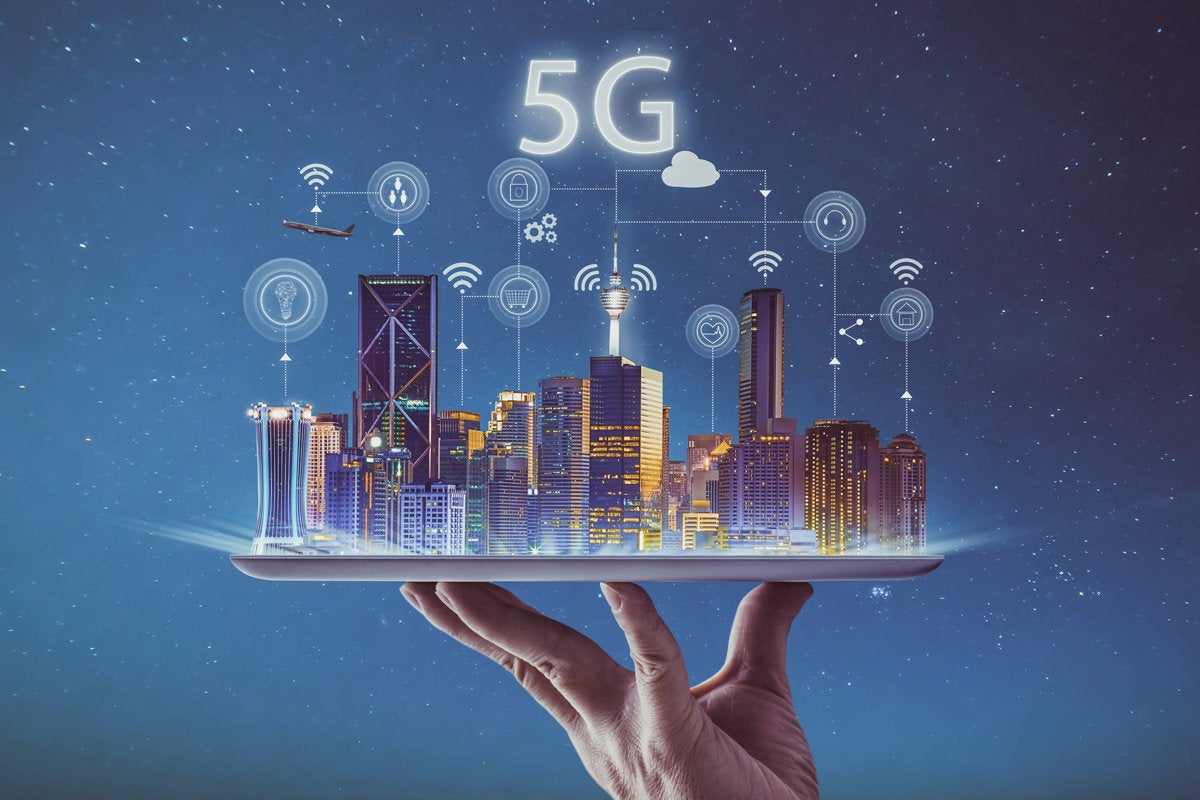Image Source - Computer World
That is 4G - the mobile network that's used around the world to make calls, send messages, and surf the web. Now there are plans for 4G to be replaced by, you guessed it, 5G - a new, faster network that has the potential to transform the internet. 5G is a software-defined network - it means that while it won’t replace cables entirely it could replace the need for them by largely operating on the cloud instead.
This means it will have an a100x better capacity than 4G - which will dramatically improve internet speeds. For example, to download a two-hour film on 3G would take about 26 hours, on 4G you’d be waiting 6 minutes, and on 5G you’ll be ready to watch your film in just over three and a half seconds. But it’s not just internet capacity that will be upgraded. Response times will also be much faster.
The 4G network responds to our commands in just under 50 milliseconds. With 5G it will take around one millisecond -400 times faster than a blink of the eye. Smartphone users will enjoy a more streamlined experience but for a world that is increasingly dependant on the internet just to function, a reduction in time delay is critical. Self-driving cars, for example, require a continuous stream of data.
The quicker that information is delivered to autonomous vehicles, the better and safer, they can run. For many analysts, this is just one example of how 5G could become the connective tissue for the internet of things, an industry that’s set to grow threefold by 2025, linking and controlling not just robots, but also medical devices, industrial equipment, and agriculture machinery. 5G will also provide a much more personalized web experience using a technique called network slicing. It’s a way of creating separate wireless networks on the cloud, allowing users to create their own bespoke network. For instance, an online gamer needs faster response times and greater data capacity than a user that just wants to check their social media. Being able to personalize the internet will also benefit businesses.
At big events like the Mobile World Congress for example - there is a mass influx of people in one particular area using data-heavy applications. But with 5G, organizers could pay foran increased slice of the network, boosting its internet capacity and thus improving its visitors’ online experience. So when can we start using 5G? Well, not yet, and according to some analysts not until 2020. 5G was created years ago and has been talked up ever since. Yet it’s estimated that even by 2025, the network will still lag behind both 4G and 3G in terms of global mobile connections. Its mainstream existence faces multiple hurdles.
The most significant of these of course is cost. According to some experts, it 5Gcould cause network operators to tear up their current business models for it to make business sense. In the U.K. for example, 3G and 4G networks were relatively cheap to set up because they were able to roll out on existing frequencies, on the country’s radio spectrum. For 5G to work properly, however, it needs frequency with much bigger bandwidth which would require brand new infrastructure. Some analysts believe that the extensive building and running costs will force operators to share the use and management of the mobile network.
This has been less of an obstacle for countries like China, which are taking a more coherent approach. The government, operators, and local companies such as Huawei and ZTE are about to launch a big 5G trials that would put them at the forefront of equipment production for the new technology. That may be at the expense of the West, where there is concern regarding Asia’s 5G progress. A leaked memo from the NationalSecurity Council to the White House called for a nationalized 5G network to keep the U.S. ahead of its global competitors.
White House officials dismissed the idea, but some experts predict that by 2025 nearly half of all mobile connections in the U.S. will be 5G, a greater percentage than any other country or region. It’s still likely however that much of the West will have a more gradual approach to 5G, driven by competition but with a patchy style of development. For example, AT& T pledged to start rolling out5G later this year but in just a handful of cities.
For key industrial zones, however, it’s predicted the technology will be adopted quickly, while for many in rural areas5G may be a long way off. But when 5G does establish itself and fulfills its supposed potential, it could even change how we get the internet at home and work - with the wireless network replacing the current system of phone lines and cables. It may not happen overnight, but 5G is coming.

Comments
Post a Comment